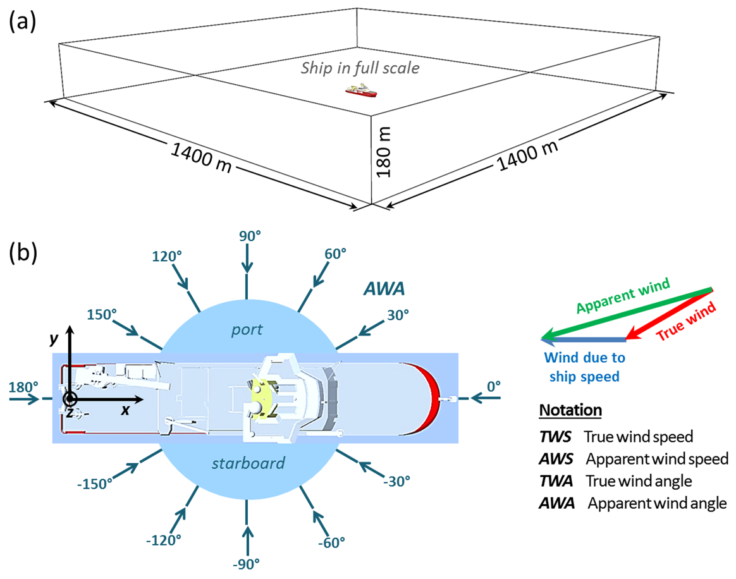The RRS Sir David Attenborough in the virtual wind tunnel
The RRS Sir David Attenborough (SDA) just got a step closer to completion as the Hamburg Ship Model Basin (HSVA) investigated the aerodynamic performance of Britain’s new polar research vessel using a computer generated ‘virtual wind tunnel’
Testing the aerodynamic performance of the SDA at design stage is crucial to ensuring that the vessel meets its operational requirements whilst fulfilling its full research potential. In recent times, the use of computational aerodynamics has developed into an attractive alternative to classic wind-tunnel tests as it offers several advantages: the ship can be analysed in full scale, testing virtually means the sensors do not obstruct the flow field, and the approach is flexible with respect to the wind model and the data post-processing.
In order to place the ship within the virtual wind tunnel the CAD model of the SDA was simplified, in close collaboration with Rolls-Royce, and the underwater hull and small parts of low importance for the flow field such as antennae and railings were removed. The resulting level of detail of the Computational Fluid Dynamics (CFD) model was comparable in complexity to a typical ship model used for wind-tunnel testing.

The scope of the study was defined by the scientists from BAS and their collaborators. Three design aspects were in the focus: the quality of wind measurement at the foremast, helideck safety and exhaust dispersion.
On the whole the design of the SDA performed well. The wind measurements identified that the foremast, which will carry most of the meteorological sensors such as the anemometers, performs better when at a level of at least 25m above the water line. Rolls-Royce modified the foremast design accordingly by raising the platform and the mast extension to factor in this new information and improve the foremasts performance.
Safe helicopter take-off and landing operations at sea require sufficiently calm flow conditions above the flight deck and when undergoing tests the landing area of the helicopter adequately fulfilled these conditions.
Finally, a classic part of aerodynamics studies for ships is an analysis of exhaust fume dispersion in the wind field. “Smoke videos” were produced in various wind conditions revealing that Rolls-Royce’s design proposal of the exhaust system performed well, with only minor modifications needed to disperse fumes more efficiently away from the engine room ventilation.
Lars-Uve Schrader from HSVA says
“The SDA project was characterised by a very fruitful collaboration between BAS, Rolls-Royce and us. By undergoing these tests virtually before construction begins we now have a good aerodynamic design of the SDA, which the ship builders can factor in.”
Now we better understand how the SDA will perform aerodynamically when constructed thanks to HSVA, who are among the world’s leading ship model basins, with an intricate understanding of all problems in ship and offshore hydrodynamics, propeller design and arctic technology based on pioneering contributions from scientists and engineers.